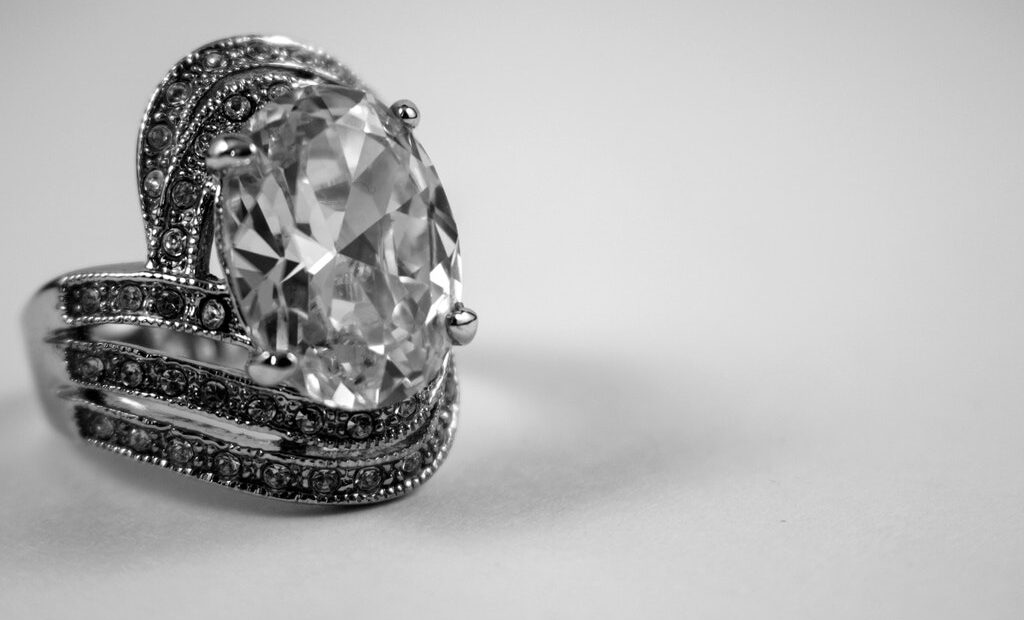Moissanite rings vs diamond rings: What’s the difference?

Following the saying that “diamonds are a girl’s best friend,” diamonds have been the stone of choice for engagement rings for decades. However, as prices rise and people become more cautious about their spending habits, others are looking to other stones instead.
One popular choice is moissanite rings, which are available in many shapes and styles that look very similar to diamond rings, and come at a fraction of the cost. A French chemist Dr Henri Moissan discovered moissanite as a new mineral in 1893, and the mineral was named after him.
The growing demand for quality jewellery and rising diamond costs prompted the search for an alternative. Although moissanite is rarely found, lab-grown options have helped to meet the demand in the market.
Important facts about moissanite vs diamonds
Moissanite stones often provide a beautiful alternative to diamonds. However, they are certainly not for everyone, and it is important to know the difference between these two stones before making a final decision.
The first thing to know about moissanite rings vs diamond rings is that the two are actually not very similar at all. A moissanite ring will certainly look impressive, but there are some unmistakable differences between it and a genuine diamond ring. Manufacturers cut moissanite stones in the same style as diamonds – round or cushion cut, brilliant-cut and so on – but the differences in appearance between moissanite rings and diamond rings are evident as soon as they are examined side by side. A genuine diamond has a unique sparkle to it, which shines with blue, white gold or pink iridescence, depending on its colouring. This vivid play of light is something that moissanite stones lack, and their sparkle is instead a little more generic. That said, moissanite stones have a higher refractive index than diamonds and most other gemstone, so they have more sparkle and brilliance than regular gems such as diamonds, even if the colour is less unique.
In terms of size and weight, moissanite stones look slightly larger than diamonds of the same carat weight. This is because diamond is denser and heavier than moissanite.
All the fine qualities of a real diamond ring come together in a moissanite wedding band. The stone is very durable and it is, therefore, perfect for daily wear as well as for special occasions. In fact, moissanite is almost as hard as diamond. This mineral has a hardness of 9.25 on the Mohs scale, making it extremely durable and resistant to scratching or chipping. Diamonds rate at 10 on the Mohs scale. For this reason, moissanite engagement rings are reliable for daily wear. One cannot scratch them easily, and, most importantly, they will stay beautiful, even with everyday use.
Moissanite rings have a good resistance against heat, which means they are perfect for wearing when using the oven, at the spa, while cooking or around hot beverages.
Moissanite was naturally discovered, but it is a lab-grown gemstone in today’s world. It has become very popular because it resembles diamonds, but it can cost much less than actual diamonds due to its availability.
Moissanites are an environmentally friendly alternative to mined diamonds owing to the creation process. They are manmade industrial by-products that would otherwise be wasted. Their extraction process does not damage the earth as most mining processes do, and their production uses less energy than most diamond mining operations.
Moissanite will stay cleaner than a diamond because it is resistant to most chemicals, making it less susceptible to damage from grease and oil from cosmetics and the skin, or the chlorine used in pools.
Many people often confuse moissanites with diamonds, but it is good to know their difference.
When asked about buying a ring that will stay beautiful forever, those in the know will probably go for moissanite because it can retain its beauty for decades.
The editorial unit

























Facebook
Twitter
Instagram
YouTube
RSS